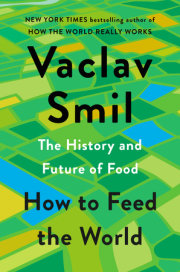What happens when we have fewer children?
Total fertility rate (TFR) is the number of children born per woman during her lifetime. The most obvious physical constraint on this is the length of the fertile period (from menarche to menopause). The age of first menstruation has been decreasing from about 17 years in preindustrial societies to less than 13 years in today's Western world, while the average onset of menopause has advanced slightly, to just above 50, resulting in a typical fertile span of some 38 years compared to about 30 years in traditional societies.
There are 300-400 ovulations during the fertile lifespan. As every pregnancy precludes 10 ovulations and because an additional 5-6 ovulations have to be subtracted for each pregnancy, due to the reduced chance of conception during the traditionally prolonged breastfeeding period, the maximum fertility rate is about two dozen pregnancies. With some multiple births the total can be in excess of 24 live births, confirmed by historical records of women having more than 30 children.
But typical maximum fertility rates in societies practicing no birth control have always been much lower than this, due to the combination of pregnancy loss, still births, infertility, and premature maternal mortality. These realities reduce maximum population-wide fertilities to 7-8; indeed, such rates were common on all continents well into the 19th century, in parts of Asia until two generations ago, and they can still be found in sub-Saharan Africa, with Niger at 7.5 (which is well below the preferred family size: when asked, the average number of children that Nigerien women would prefer is 9.1!). But even in that region, the TFR-although still high-has declined (to 5-6 in most of those countries), and the rest of the world now lives with moderate, low, and extremely low fertilities.
The transition toward this new world began at different times, not only among different regions but also within regions: France was far ahead of Italy, Japan far ahead of China-and Communist China eventually took the drastic step of restricting families to a single child. That aside, desire for fewer children has been driven by an often highly synergistic combination of gradually rising standards of living, the mechanization of agricultural work, the displacement of animals and people by machines, mass-scale industrialization and urbanization, increasing numbers of females in the urban labor force, advancing universal education, better healthcare, a higher survival rate of newborns, and government-guaranteed pensions.
A historic pursuit of quantity turned, sometimes rapidly, into the quest for quality: the benefits of high fertility (ensuring survival amid high infant mortality; supplying additional labor force; providing old-age insurance) began to weaken and then to disappear, and smaller families invested more in their children and in raising their quality of life, usually starting with better nutrition (more meat and fresh fruit; more eating out) and ending with SUVs and flights to distant tropical beaches.
As is often the case in both social and technical transitions, the pathbreakers took a long time to accomplish the change, while some late adopters completed the process in just two generations. The shift from high to low fertility took about two centuries in Denmark and about 170 years in Sweden. In contrast, South Korean fertility fell from more than 6 TFR to below the replacement level in just 30 years, and even before the introduction of the one-child policy, Chinese fertility had plunged from 6.4 in 1962 to 2.6 in 1980. But the unlikely record holder is Iran. In 1979, when the monarchy was overthrown and Ayatollah Khomeini returned from exile to establish a theocracy, Iran's fertility averaged 6.5, but by the year 2000 it was down to the replacement level and it has continued to fall.
The replacement level of fertility is that which maintains a population at a stable level. It is about 2.1, with the additional fraction needed to make up for girls who will not survive into fertile age. No country has been able to stop the fertility decline at the replacement level and achieve a stationary population. An increasing share of humanity lives in societies with below-replacement fertility levels. In 1950, 40 percent of humanity lived in countries with fertilities above 6 and the mean rate was about 5; by the year 2000, just 5 percent of the global population was in countries with fertilities above 6, and the mean (2.6) was close to the replacement level. By 2050, nearly three-quarters of humanity will reside in countries with below-replacement fertility.
This nearly global shift has had enormous demographic, economic, and strategic implications. European importance has diminished (in 1900 the continent had about 18 percent of the world's population; in 2020 it has only 9.5 percent) and Asia has ascended (60 percent of the world total in 2020), but regional high fertilities guarantee that nearly 75 percent of all births during the 50 years between 2020 and 2070 will be in Africa.
And what does the future hold for countries whose fertility has fallen below the replacement level? If the national rates remain close to the replacement (no lower than 1.7; France and Sweden were at 1.8 in 2019), then there is a good chance of possible future rebounds. Once they slip below 1.5, such reversals appear increasingly unlikely: in 2019, there were record lows of 1.3 in Spain, Italy, and Romania, and 1.4 in Japan, Ukraine, Greece, and Croatia. Gradual population decline (with all of its social, economic, and strategic implications) seems to be the future of Japan and of many European countries. So far, no pro-natalist government policies have brought any major reversal, and the only obvious option to prevent depopulation is to open the gates for immigration-but that looks unlikely to happen.
The best indicator of quality of life? Try infant mortality
When looking for the most revealing measures of human quality of life, economists-ever ready to reduce everything to money-prefer to rely on per capita values of gross domestic product (GDP) or disposable income. Both measures are obviously questionable. GDP goes up in a society where increasing violence requires more policing, higher investment in security measures, and more frequent admissions to hospitals; and average disposable income tells us nothing about the degree of economic inequality or about the social net available to disadvantaged families. Even so, these measures do give a pretty good overall ranking of countries. Not too many people would prefer to live in Iraq (2018 nominal GDP of about $6,000) than in Denmark (2018 nominal GDP of about $60,000). And average quality of life is undoubtedly higher in Denmark than in Romania: both belong to the EU, but the disposable income is 75 percent higher in the former.
Since 1990, the most common alternative has been to use the Human Development Index (HDI), a multivariable measure constructed in order to provide a better yardstick. It combines life expectancy at birth and educational achievements (mean and expected years of schooling) with the gross national income per capita-but (not surprisingly) it correlates highly with the average per capita GDP, making the latter variable about as good a measure of the quality of life as the more elaborate index.
My own choice of a single-variable measure for rapid and revealing comparisons of quality of life is infant mortality: the number of deaths during the first year of life that take place per 1,000 live births.
Infant mortality is such a powerful indicator because low rates are impossible to achieve without having a combination of several critical conditions that define good quality of life-good healthcare in general, and appropriate prenatal, perinatal, and neonatal care in particular; proper maternal and infant nutrition; adequate and sanitary living conditions; and access to social support for disadvantaged families-and that are also predicated on relevant government and private spending, and on infrastructures and incomes that can maintain usage and access. A single variable thus captures a number of prerequisites for the near-universal survival of the most critical period of life: the first year.
Infant mortalities in preindustrial societies were uniformly and cruelly high: even by 1850 the rates in western Europe and in the United States were as high as 200-300 (that is, every fifth to every third child did not survive the first 365 days). By 1950, the Western mean was reduced to 35-65 (typically one out of 20 newborns died within its first year), and now the lowest rates in affluent countries are below 5 (with one infant among 200 not seeing its first birthday). After leaving out minuscule jurisdictions-from Andorra and Anguilla to Monaco and San Marino-this group with infant mortalities lower than 5 per 1,000 includes about 35 countries ranging from Japan (at 2) to Serbia (at just under 5), and its frontrunners show why the measure cannot be used for simplistic ranking without reference to wider demographic conditions.
Countries with the lowest infant mortalities are mostly small (with populations less than 10 million and usually less than 5 million), they include the world's most homogeneous societies ( Japan and South Korea in Asia; Iceland, Finland, and Norway in Europe), and most of them have very low birth rates. Obviously, it is more challenging to reach and maintain very low infant mortalities in larger, heterogeneous societies with high rates of immigration from less affluent countries, and in countries with higher birth rates. As a result, it would be difficult to replicate the Icelandic rate (3) in Canada (infant mortality at 5), a country whose population is more than 100 times larger and that welcomes annually about as many newcomers (from scores of countries, and mostly from low-income societies in Asia) as there are total people living in Iceland. The same realities affect the United States, but the country's relatively high infant mortality (6) is undoubtedly influenced (as is, to a lesser degree, the Canadian rate) by higher economic inequality.
In this sense, infant mortality is a more discerning indicator of quality of life than the income average or the Human Development Index, but it still needs qualifications: no single measure is a fully satisfactory proxy for gauging a nation's quality of life. What is not in doubt is that infant mortalities remain unacceptably high in a dozen of sub-Saharan nations. Their rates (above 60 per 1,000) are equal to those in western Europe some 100 years ago, a timespan that evokes the developmental gap those nations have to close in order to catch up with affluent economies.
The best return on investment: Vaccination
Death due to infectious diseases in infancy and childhood remains perhaps the cruelest fate in the modern world, and one of the most preventable. Measures needed to minimize this untimely mortality cannot be ranked as to their importance: clean drinking water and adequate nutrition are as vital as disease prevention and proper sanitation. But if you judge them by their benefit-cost ratios, vaccination is the clear winner.
Modern vaccination dates back to the 18th century, when Edward Jenner introduced it against smallpox. Vaccines against cholera and plague were created before the First World War, and others against tuberculosis, tetanus, and diphtheria before the Second. The great postwar breakthroughs included routine vaccinations against pertussis (whooping cough) and polio. Today, the standard practice everywhere is to inoculate children with a pentavalent vaccine that prevents diphtheria, tetanus, pertussis, and polio, as well as meningitis, otitis, and pneumonia, three infections caused by Haemophilus influenzae type B. The first dose comes 6 weeks after birth; the other two follow at 10 and 14 weeks. Each pentavalent vaccine costs less than $1, and every additional vaccinated child reduces the chances of infection among unvaccinated peers.
Given these realities, it has been always clear that vaccination has an extraordinarily high benefit-cost ratio, though one that is not easy to quantify. But thanks to a 2016 study supported by the Bill & Melinda Gates Foundation and conducted by US healthcare professionals in Baltimore, Boston, and Seattle, we can finally measure the payoff. The study's focus was on the return on investment associated with projected vaccination coverage levels in nearly 100 low- and middle-income countries during the second decade of this century-the decade of vaccines.
Benefit-cost ranges were based on the costs of vaccines and of their supply and delivery chains on one hand, and on estimates of the averted costs of morbidity and mortality on the other. For every dollar invested in vaccination, $16 is expected to be saved in healthcare costs and the lost wages and lost productivity caused by illness and death.
And when the analysis went beyond the restricted cost-of-illness approach and looked at broader economic benefits, it found the net benefit-cost ratio was more than twice as high-reaching 44 times, with an uncertainty range of 27 to 67. The highest rewards were for averting measles: a 58-fold return.
The Gates Foundation released the finding of the 44-fold benefit in the form of a letter to Warren Buffett, the foundation's largest outside donor. Even he must be impressed with such a return on investment!
There is still some way to go. After generations of progress, the basic vaccination coverage in high-income countries is now nearly universal, at around 96 percent, and great advances have been made in low-income nations, where the coverage has risen from only 50 percent in the year 2000 to 80 percent in 2016.
The hardest part might be to eliminate the threat of infectious diseases entirely. Polio is perhaps the best illustration of this challenge: the worldwide infection rate dropped from some 400,000 cases in 1985 to fewer than 100 by the year 2000, but in 2016 there were still 37 cases in violence-beset regions of northern Nigeria, Afghanistan, and Pakistan. And, as illustrated recently by the Ebola, Zika, and COVID-19 viruses, new infection risks will arise. Vaccines remain the best way to control them.
Copyright © 2021 by Vaclav Smil. All rights reserved. No part of this excerpt may be reproduced or reprinted without permission in writing from the publisher.











